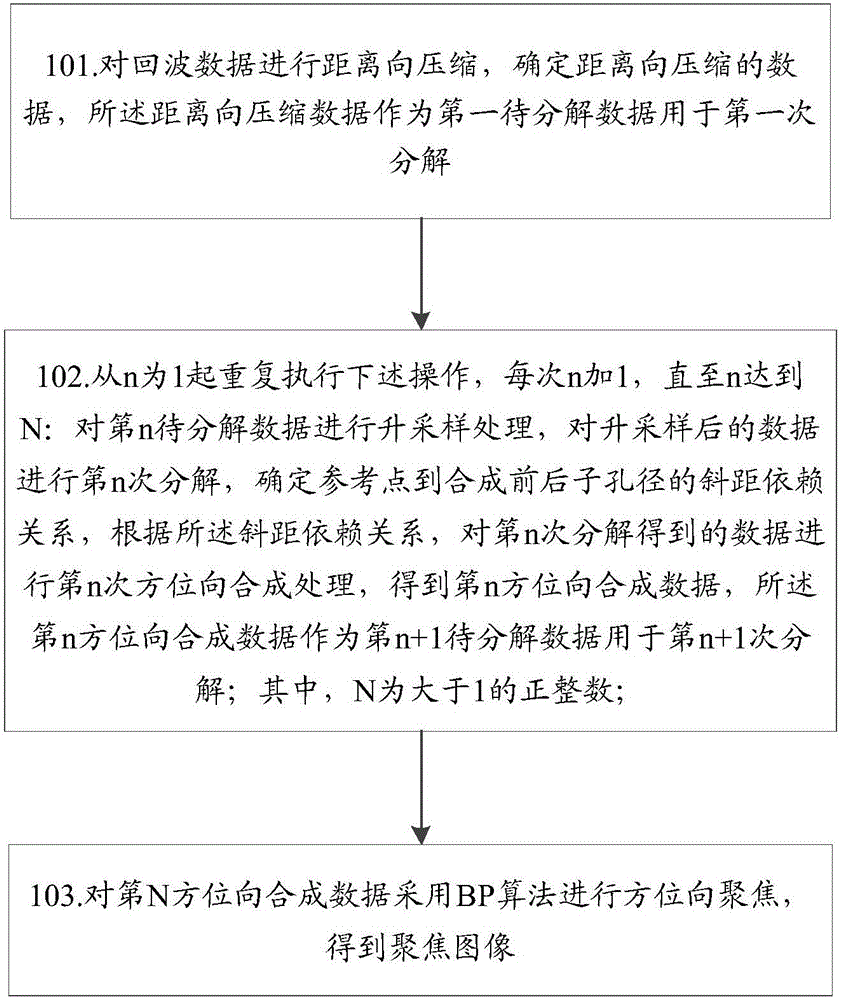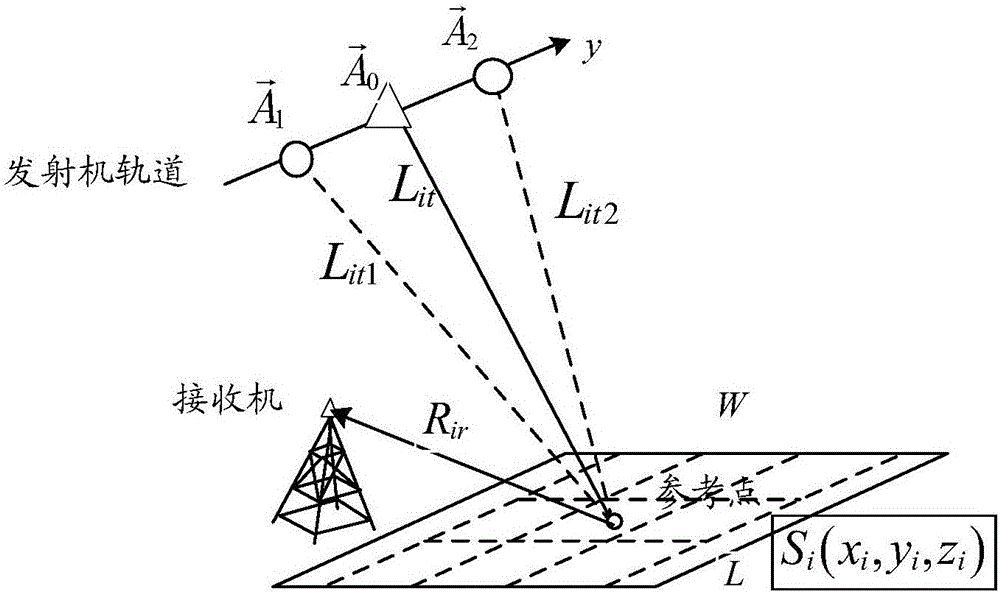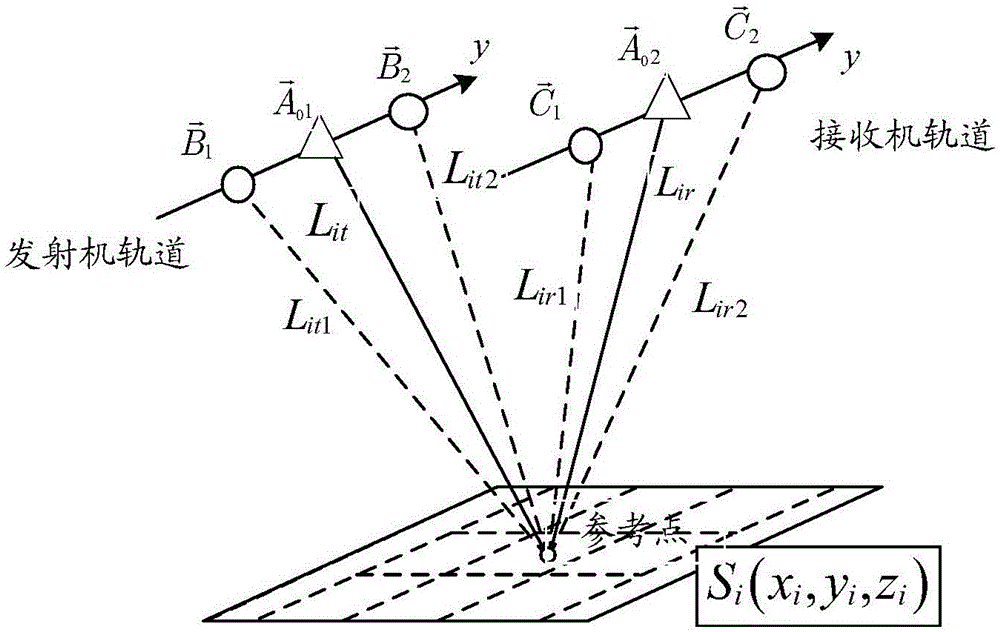Bistatic synthetic aperture radar imaging method and device
A technology of synthetic aperture radar and imaging method, applied in measurement devices, radio wave reflection/re-radiation, utilization of re-radiation, etc., can solve the problem that the frequency domain imaging algorithm cannot adapt, the focusing process takes a long time, and the time domain imaging algorithm is complicated. high degree issues
- Summary
- Abstract
- Description
- Claims
- Application Information
AI Technical Summary
Problems solved by technology
Method used
Image
Examples
Embodiment 1
[0046] figure 1 The implementation process of the method for BiSAR imaging in the embodiment of the present invention includes the following steps:
[0047] Step 101: performing range compression on the echo data, and determining the range compressed data, which is used as the first data to be decomposed for the first decomposition.
[0048] In this step, according to the different modes of BiSAR imaging, the echo data can be compressed in the range direction through the matched filter, and the data compressed in the range direction can be determined; specifically include:
[0049] When the echo data is azimuth-displacement-invariant BiSAR data, the echo data is subjected to Fourier forward transform first, then multiplied by the frequency-domain matched filter function, and then inverse Fourier transform is performed to obtain range-compressed data;
[0050] When the echo data is one-station fixed BiSAR data, first perform Fourier forward transform on the echo data, and then...
Embodiment 2
[0137] In order to implement the method of Embodiment 1, the BiSAR imaging device provided by the embodiment of the present invention, such as Figure 4 As shown, the device includes: a range compression module 41, an azimuth synthesis module 42, and an azimuth focus module 43, wherein,
[0138] The range compression module 41 is configured to perform range compression on the echo data, and determine the range compressed data, and the range compression data is used as the first data to be decomposed for the first decomposition;
[0139] The azimuth synthesis module 42 is used to repeatedly perform the following operations since n is 1, adding 1 to n each time until n reaches N: perform up-sampling processing on the nth data to be decomposed, and perform up-sampling processing on the up-sampled data Decomposition for the nth time determines the slant distance dependence relationship between the reference point and the sub-aperture before and after synthesis, and according to th...
PUM
 Login to View More
Login to View More Abstract
Description
Claims
Application Information
 Login to View More
Login to View More - R&D
- Intellectual Property
- Life Sciences
- Materials
- Tech Scout
- Unparalleled Data Quality
- Higher Quality Content
- 60% Fewer Hallucinations
Browse by: Latest US Patents, China's latest patents, Technical Efficacy Thesaurus, Application Domain, Technology Topic, Popular Technical Reports.
© 2025 PatSnap. All rights reserved.Legal|Privacy policy|Modern Slavery Act Transparency Statement|Sitemap|About US| Contact US: help@patsnap.com



